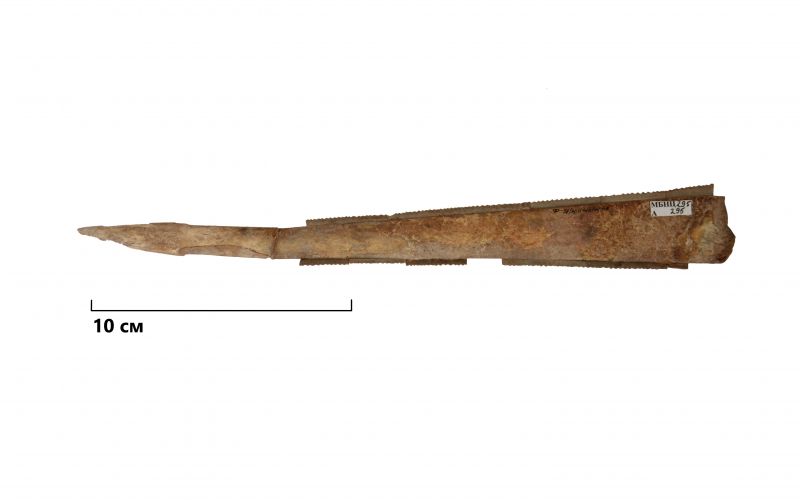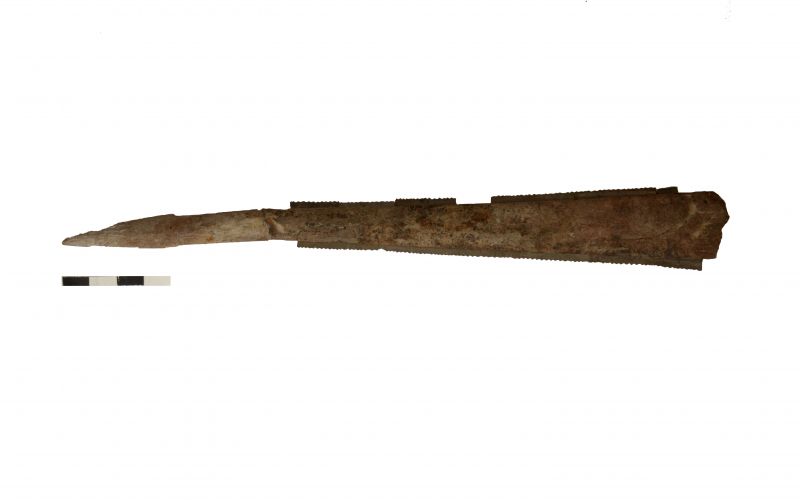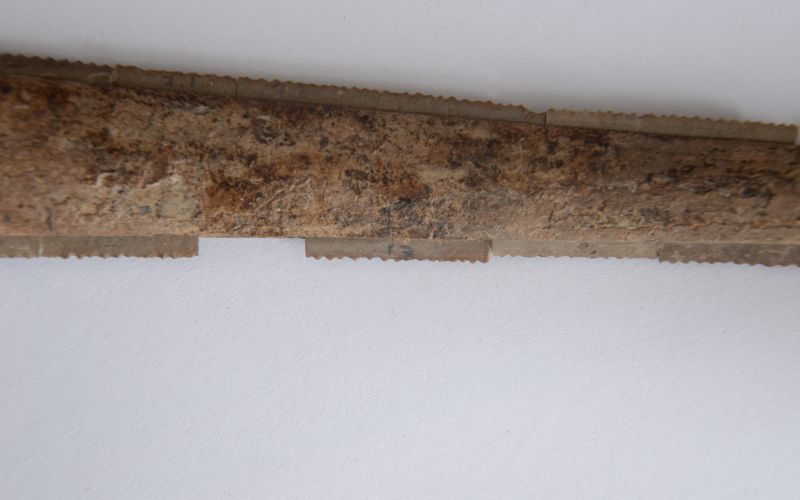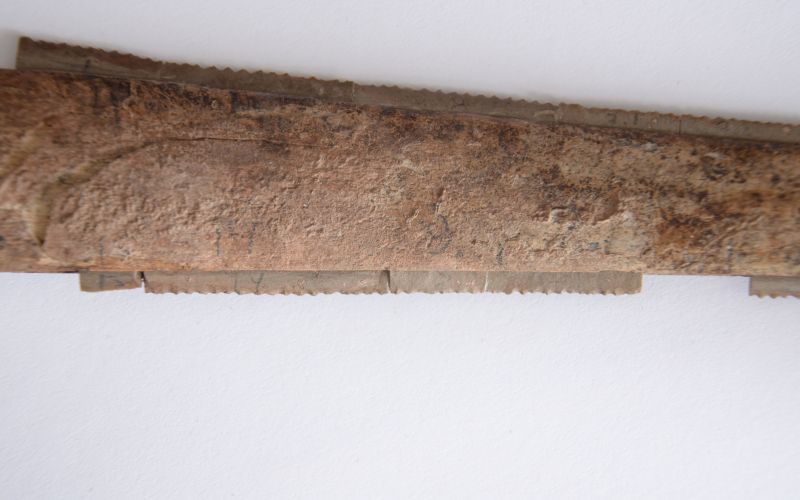Insert dagger
A composite insert tool has a long bone base which evenly thins to one end and makes a tip. On the other end of the item (haft element), there are traces of two flakes. On the sides, the item has slots for inserts which are the blade. In the slot, 14 microblades remain. The microblades have traces of uneven denticulated retouch and are made of siliceous material of grayish-beige color.
The dagger was found in the family grave №11. Radiocarbon date is 6 660 +- 100 BP
Manufacturing technique
Initially, the bone was moistened and heat treated for straightening the blank. As a result of the polishing and the following grinding of the blank, the base for insert tool was made. The edges of the base and the area for cutting the slots were made with grinding. The slot was made with a cutting tool. After cutting the slot, it was filled with adhesive, probably organic, substance.
Use-wear traces
There are some traces of polishing on the large area, farthest from the edge of the tool blade and along the entire working edge. When contacting with treated material, the item made uniform progressive movements.
Storage location
The museum of BSC SB RASInventory number
295Size
Length - 248 mm
Width - 1-25 mm
Thickness - 1-9 mm
Depth of slot - 1-2 mm
Sizes of inserts - (7-30)x(3-4)x1 mm
Material
BoneDating
6 660 +- 100 years BPCulture
Initial Neolithic, KitoyskayaThe author of the excavations
Konev V.P.1996
Publications
Volkov P.V., ZHambaltarova E.D. Kinzhaly fofonovskogo mogil'nika (iz kollekcii muzeya Buryatskogo nauchnogo centra SO RAN): eksperimental'no-trasologicheskij aspekt // Arekhologiya, etnografiya i antropologiya Evrazii, №4 (48), - Novosibirsk, 2011. - S. 22-28



